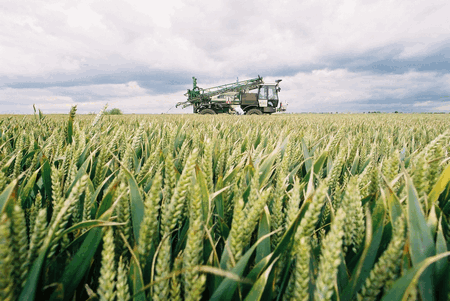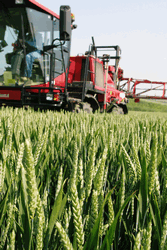Project aims to pinpoint foliar N requirement

About half of the UK’s bread-making wheat receives late nitrogen as foliar urea, but with prices soaring and increasing environmental pressure on growers to justify all nitrogen inputs, accurately targeting applications is more important than ever.
That is where a three-year project, sponsored by HGCA and Defra through the Sustainable Arable LINK programme could help. It aims to improve the efficiency of decision making by measuring a crop’s nitrogen content between growth stages 61-73 to predict final grain protein content and yield, allowing growers to tailor foliar urea accordingly.
“We should be able to identify those crops that don’t need any nitrogen because they’ll hit 13% protein anyway and those where it’s not worth putting any on because there’s no chance of reaching 13%,” explains project leader, Richard Weightman of ADAS Boxworth. “There will be a further proportion of crops which, without foliar urea would not make milling quality, but with it, will receive a full or partial premium.”

He suggests that if the system can be fine tuned and adopted commercially, the amount of foliar urea applied in the UK could be cut by up to one third. This would save the industry around £2.8m/annum in input costs (based on total applications of 13,280 tonnes/ annum of N applied as foliar urea at more than 60p/kg N), he estimates. “Of course, the main benefits will come where we help growers to achieve the premium by identifying those borderline crops which will benefit from extra N.”
The biggest benefits could be for high-yielding varieties, where protein dilution means high rates of total N are required, he adds. “For varieties such as Soissons and Hereward there generally aren’t too many problems achieving required protein levels, whereas something like Xi19 is so high yielding, it’s often difficult to get enough nitrogen into the crop and stay within recommended N application levels.”
How the system works
Growers collect wheat samples at the flowering/ milky ripe stage (GS 61-73) and send them to central grain cooperative labs for FT-NIR (Fourier transform near infrared) analysis of crop nitrogen content. The moisture content and weight of each sample is also recorded to estimate total biomass. This information, combined with a measure of ear numbers, and the HGCA’s newly updated Wheat Growth Guide can be used to model the crop’s N redistribution from leaves and stems, to ears through to harvest. “The idea is to get an idea of what the crop is doing and ultimately tell the farmer whether it will achieve 13% protein or not,” Dr Weightman says. “It’s really building on the HGCA Wheat Growth Guide.”
Last harvest was the first year of the project and 78 fields from 26 commercial growers in East Anglia were analysed by Fengrain and Camgrain labs. Grain proteins at harvest ranged from 10.1-15.3% and yields from 5.7-11.8t/ha. “As it was the first year of the project, we didn’t use the system as a predictive tool. Analysis did show though, N in crops pre-harvest was generally quite low, but because it was an unusually wet season and yields were down, final contents at harvest were actually slightly better than expected.
“We hope to try live reporting this year, where labs will scan a sample, run it through the model and mail results to growers in time to fine tune late urea applications. We definitely think there will be a commercial application for this by the end of the project, although it will need to be rolled out to other co-ops.”

Camgrain director and farmer Carl Driver is one of those involved with the project on his 1400ha farm south of Bury St Edmunds, Suffolk. He had three fields of second and continuous wheat tested last year and found that final grain protein came in on, or close to the mark on each one.
“Once the system has been fine-tuned, it could be a very useful management tool. The cost associated with getting 13% protein is probably twice that of last year and rising, so any savings will be worth a lot.”
The greatest potential benefit will be on high-yielding varieties such as Xi19, where total nitrogen rates of 270-280kg N/ ha are needed to achieve the required grain protein, he says. “Late urea is an important part of this.
“Knowing exactly what we need to do to hit the mark is really important. Every season is different and if things change and yield potential increases, you will get a protein dilution, resulting in potentially big losses through lost premium.”
Targeting foliar urea
- Crop N at GS 61-73 used to estimate final grain protein
- Could help avoid unnecessary foliar urea applications
- Builds on HGCA’s updated Wheat Growth Guide
- Three-year project ends 2010
- Commercial application likely
- Project partners: HGCA, Bruker Optics, Heygates, Fengrain, Camgrain, CCFRA, ADAS

